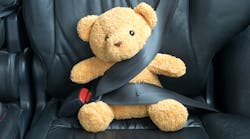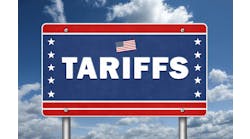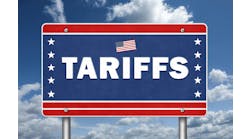The toy industry has never been more crowded and diverse, as many new manufacturers are producing hundreds of varieties of new toys each year in many new toy categories. Coming off its strongest annual revenue growth in 17 years, led by an uptick in toy licensing by the entertainment sector, the $20.36 billion industry has both the means and the motivation to take the next step.
With this ongoing industry expansion comes ever-greater supply chain complexity posing potential risks to safety and performance. As a result, the toy industry is increasing its focus on the safety of its manufacturing production and supply chain processes to keep up with these changes. Greater visibility into product supply chains can help manufacturers boost levels of trust in their products among consumers, as well as help to ensure that while toys are safe today, manufacturers continue to deliver even safer toy products to market.
When Recalls Happen
While regulations are in place, the majority of toy recalls that happen today are for toys that meet regulatory requirements. ASTM, an international standards organization, recently updated its standards for consumer toys—ASTM F963, updated in October 2016, is the official standard for toy safety in the United States. The standard incorporates relevant safety measures already required under federal law and includes additional guidelines and test methods to prevent injuries from choking, sharp edges and other potential hazards. The standard is largely responsible for the downtick in recalls in recent years.
Although compliance with U.S. safety regulations and standards (ASTM F963) is mandatory for children’s toys, recalls still happen. For instance, last month the CPSC issued a nationwide recall of Douglas Plush Toys. Three plush toy models—a total of 25,000 products—were recalled because of a potential choking hazard involving plastic eyes, which can detach. The toys in question had been sold at retail and specialty stores for nearly three years and are now being recalled from the market.
As is true in nearly every industry, the digital age is making it easy for start-ups and specialty manufacturers to also enter the toy marketplace. Newer and “fast” manufacturers, such as those behind the latest fidget spinner craze, are just as susceptible to potential recalls as their more established colleagues. While stocking their products via online marketplaces like Amazon may make it easier to remove or take down potentially unsafe toys as opposed to having to physically remove products from storefronts, the financial loss to the toy manufacturers is the same.
Getting Even Better
Though these types of incidents are happening at a much lower rate, recalls can be further reduced if manufacturers take a closer look inside their own supply chains. Building stronger supply chains is not only safer for consumers, but it helps toy manufacturers run their businesses more efficiently. Highlighting a potential problem or misstep along the way before a toy is considered a finished product can save a lot of time and money on the production side.
When toy recalls were at an all-time high back in 2007 and 2008, a lot of attention was paid to the state of the end-product and what regulatory benchmarks should be placed on those end-products to make them safe. Ideally, every toy end-product would go through the exact same experience throughout the supply chain to arrive at the end of production as a safe consumable for a child. In reality, it’s quite impossible for either manufacturers or third parties to guarantee that the supply chain experience remains identical for every product that goes through it solely based on the sample products that are tested. Third-party safety testing agencies only receive a sample of the toys for assessment and testing against safety benchmarks and seldom do they know the ins and outs of what ingredients are used and how those toys are actually produced.
What forward-looking members of the industry call for now is greater visibility into supply chains, and there are ongoing discussions about how best to do that. At its core, greater visibility into the supply chain is achieved through manufacturers spending the extra time to take a closer look at their production lines from the start all the way through to the end-product.
Product testing is still a big part of the job. Testing final product samples is the number one way to help ensure that products are compliant with the ASTM F963 standard. A lot of this testing is based on random sample sizes, but the samples are put through rigorous testing to make sure they are up to par with national and international benchmarks for toy safety.
Another approach is the introduction of quality audits and inspections to suppliers’ manufacturing operations. These types of inspections go deeper than the random sample sizes mentioned earlier. Annual and bi-annual quality audits at manufacturing facilities can help ensure that the right processes are in place for the production of toy products. With added inspections throughout the supply chain, manufacturers will be able to not only help ensure their product lines and the product lines of their suppliers are running efficiently and safely, but they can also pinpoint potential problems more easily, potentially driving down overhead costs. Additional follow-up inspections throughout the year or after a production line has been checked can also help to ensure compliant behavior remains consistent, not just during times of inspections.
With U.S. safety measures for toys in place and being followed by nearly all parties involved, the toy industry can now focus on proactive supply chain risk management. New programs, incorporating a closer look into the everyday production of these toy products and their parts, will help to further reduce toy recalls for years to come.
Jennifer Buoniconti is the toy lead in North America for UL’s Consumer and Retail Services, which recently introduced the UL Toy Safety Certification Program to allow retailers, suppliers, wholesalers and manufacturers to demonstrate that they have strong supply chain practices in place.



